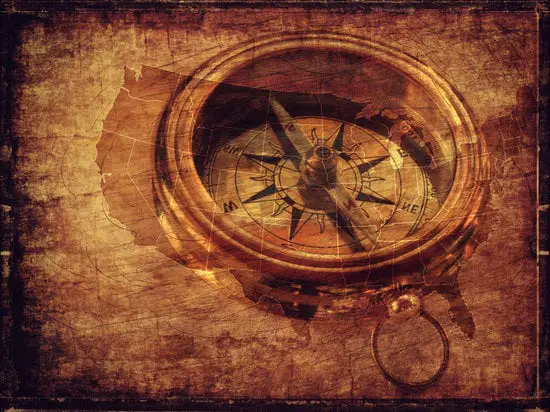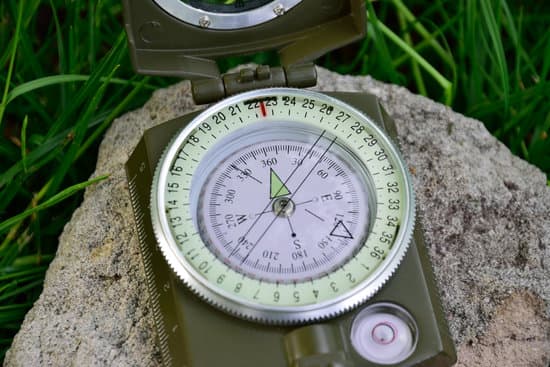How to Make Your Own Compass?
Have you ever wondered how a compass works? Or maybe you're looking for a fun and educational project to do with your kids. If so, then making your own compass is a great option. You can even find online compass direction tools to get a virtual experience before making a physical compass.
In this article, we'll show you how to make a compass using two different methods: a water-based compass and a needle and cork compass. Both methods are relatively simple and require only a few materials.
By following these step-by-step instructions, you'll craft your own compass and gain a deeper appreciation for the science behind this navigation tool. Whether you're in the wilderness or simply want to explore the wonders of magnetism, this compass-making project is a fascinating and educational experience.
So what are you waiting for? Let's get started!

Compass Materials: A Checklist
To begin crafting your own compass, you'll need the following materials:
- Bowl:A regular bowl that will hold water for your compass experiment.
- Water bottle cap:This will be used as a floating platform for your compass.
- Water:Fill the bowl with water. It will serve as the base for your compass.
- Paperclip:A standard paperclip, which will play a key role in your water-based compass.
- Magnet:You'll need a magnet to magnetize the paperclip, an essential step in creating your compass.
- Sewing needle (1-2 inches long):This needle will be used in another compass-making method, involving a piece of cork.
- Small bar magnet or refrigerator magnet:This magnet will help you magnetize the sewing needle for the cork compass.
- Small piece of cork (ensure it's cork and not plastic):The cork serves as the floating base for the needle compass.
- Shallow bowl:Another bowl, similar to the first one, will be used for the cork compass.
- Pliers (use caution, needles are sharp):Pliers will be helpful in handling the sewing needle when inserting it into the cork.

Bowl and Water Bottle Cap Compass:
- Fill the bowl with water:Start by filling one of the bowls with water. This water will be the stage for your compass experiment.
- Take your paperclip and straighten it out:You'll use the paperclip as the needle for this compass.
- Using your magnet, apply light pressure to the paperclip and run it across the paperclip:Gently run the magnet across the paperclip in a single direction about 3 to 4 times. Ensure you pull the magnet away from the paperclip when returning to the starting point. This magnetizes the paperclip.
- Place the bottle cap into the bowl so that it floats: The bottle cap will serve as the platform on which the magnetized paperclip (your compass needle) will rest.
- Place the paperclip on the bottle cap:Carefully position the paperclip on top of the floating bottle cap. It should move freely on the water's surface.
- If the paperclip does not rotate and find North, try running the magnet across it a few more times:If your paperclip doesn't rotate and align itself with the Earth's magnetic field (finding North), run the magnet across it a few more times to ensure it's properly magnetized.
These steps create a simple water-based compass using a paperclip and a bottle cap.
Needle and Cork Compass:
- Magnetize the needle:In this compass-making method, you'll use a sewing needle. Begin by rubbing the tip of the sewing needle against a magnet. Ensure that all strokes are in the same direction. Strong magnets require fewer strokes, while weaker ones may need up to 50 strokes. This process magnetizes the needle.
- Prepare the Cork:Cut a small circle, about 1/4 inch thick, from one end of the cork. This cork circle will serve as the base for your compass.
- Insert the Needle:Securely grip the magnetized sewing needle with pliers and push it through one end of the cork, making sure it comes out the other end evenly. The needle should be centered within the cork.
- Test Your Compass:Fill the shallow bowl halfway with water and gently place your "compass" (cork with needle) on the water's surface. The needle should be free to move.
- Place the compass on a flat surface and observe the needle:As it aligns itself with the Earth's magnetic field, the needle should point toward the nearest magnetic pole (north or south) depending on your location.
- Label Your Compass:It's important to remember that your homemade magnet is temporary. To use it in the future, re-magnetize the needle by rubbing it against a magnet.
By following these step-by-step instructions for both compass-making methods, you'll craft your compass and gain a deeper appreciation for the science behind this navigation tool. Whether you're in the wilderness or simply want to explore the wonders of magnetism, this compass-making project is a fascinating and educational experience.